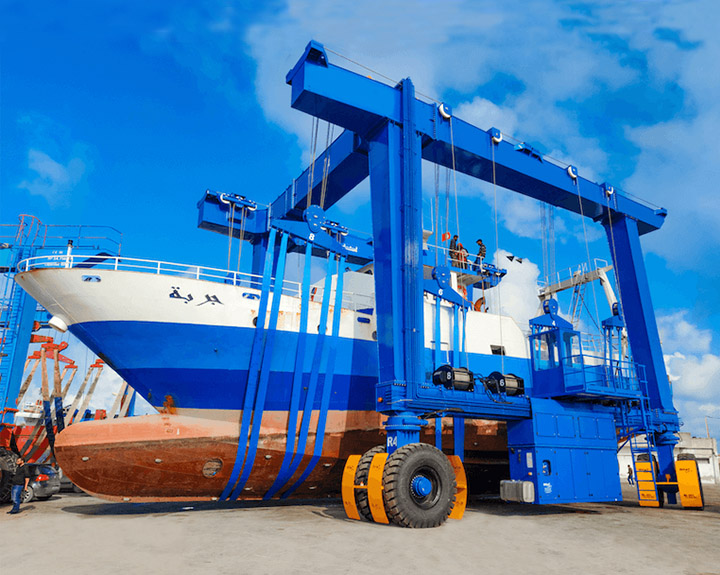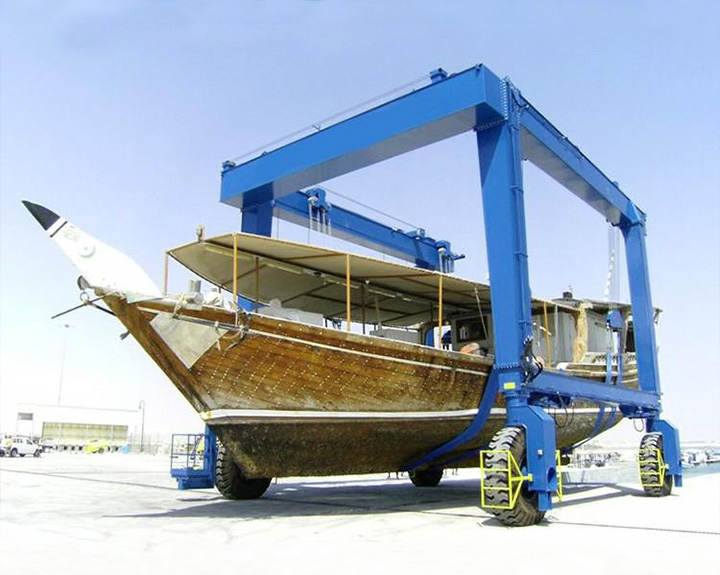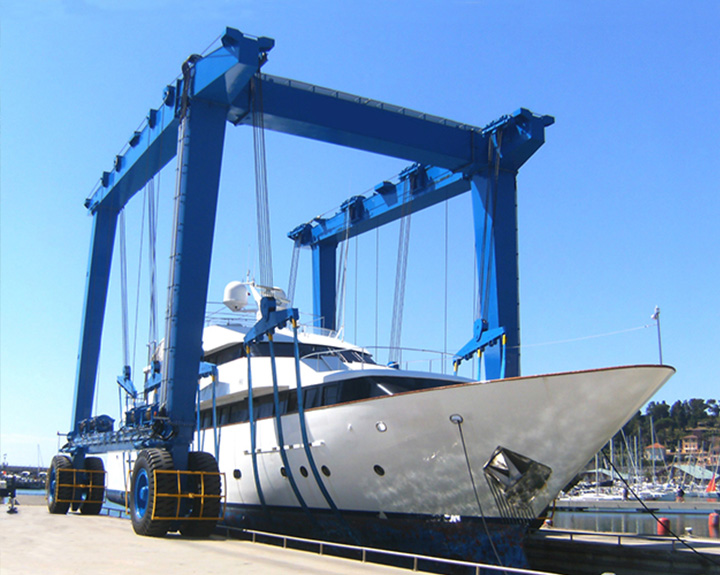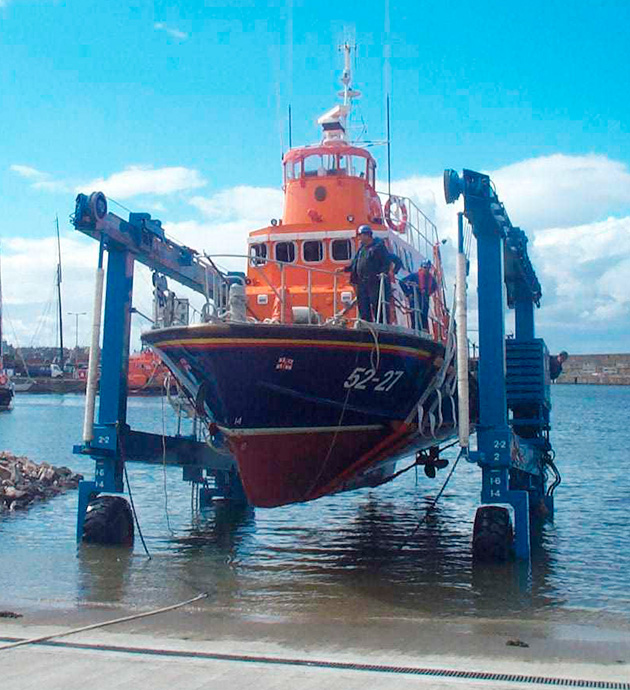Why Do We Need a Budget-Friendly Marine Hoist?
In today’s global shipping market, small and medium-sized ports and shipyards face multiple challenges, especially in terms of operating costs. The annual maintenance budget of many small and medium-sized ports usually does not exceed US$500,000, which requires them to find a delicate balance between the equipment procurement and operational efficiency of marine hoists. In order to achieve optimal operation within a limited budget, port managers need to carefully consider every expenditure and ensure that the purchased marine hoist can meet the needs without causing financial burden.

In addition, the replacement cycle of traditional marine hoists is as long as 10 to 15 years, which means that once invested, you need to rely on these equipment for a long time. However, as the marine hoist ages, energy consumption tends to increase and the failure rate will also increase significantly. According to a report by DNV, the risk of downtime of marine hoists that have been used for more than 8 years has increased by 43%. This is undoubtedly a huge risk for small ports that rely on efficient operations. Therefore, choosing a suitable marine hoist is not only about the initial investment, but also an important factor in ensuring long-term operational stability.
At the same time, with the rise of temporary projects such as offshore wind power, the market demand for short-term and cost-effective marine hoist rental solutions is also growing. This flexible operation demand has prompted ports and shipyards to look for more budget-friendly equipment to adapt to the rapidly changing market environment.
Many people often equate the concept of “budget-friendly” with low quality, but in fact, with the advancement of technology, new materials and design concepts are completely changing this view. For example, the application of Q345B grade steel and the combination of hot-dip galvanizing process have significantly improved the rust resistance of marine hoists, extending their rust resistance life to 12 years. This technological advancement has made the new generation of marine hoists 60% more durable than traditional models, and users no longer need to frequently replace equipment, thereby reducing long-term operating costs.
In addition, the emergence of modular design has made the transportation and installation of marine hoists more efficient. Taking the production operator Huadelift as an example, its detachable structure can effectively reduce transportation costs and installation costs, saving about 35% of related costs. The flexibility of this design allows users to more easily adjust the equipment configuration when facing different project requirements.
In terms of power systems, the popularity of hybrid marine hoists also provides new options for marine hoists. This type of model can reduce energy consumption by 28% under certain conditions, and its initial investment is usually 40% lower than that of pure electric models. This means that even with a limited budget, users can still choose a high-performance, low-energy marine hoist without sacrificing equipment quality or performance.
3 Purchasing Criteria for Budget-Friendly Marine Hoists
1. Power system: balancing efficiency and energy consumption
When choosing a marine hoist, the power system is a crucial consideration. Different types of power systems are suitable for different operating scenarios.
By comparing the characteristics and costs of different power systems, users can more clearly understand the advantages and disadvantages of each marine hoist, so as to make an informed decision based on actual needs.
2. Structural materials: Corrosion resistance determines life cycle
The structural materials of a marine hoist directly affect its durability and maintenance costs. Here is a comparison of several common materials:
Choosing the right structural material can greatly extend the service life of the marine hoist and reduce the total cost of ownership.
3. Safety function: a core configuration that cannot be compromised
When choosing a marine hoist, safety functions are a core configuration that cannot be compromised. Here are some essential and value-added safety features:
Essential items:
Value-added items:
By choosing a marine hoist with these safety features, users can significantly reduce operational risks and protect the safety of operators.

Cost-effective Maintenance Strategy for Marine Hoist
1. 4 golden nodes for daily inspection
To ensure the safety and performance of the marine hoist, regular daily inspections are essential. The following are four key inspection nodes:
Through these daily inspections, the failure rate of the marine hoist can be greatly reduced, ensuring the safe and efficient operation of the equipment.
2. 3 tips to reduce maintenance costs
To reduce maintenance costs, users can take the following practical tips:
Intelligent Revolution: Ai Marine Hoist Changes the Port Ecology
When the morning mist still shrouds the Port of Rotterdam, a marine hoist equipped with an AI system has begun to autonomously plan all-day operations. This equipment is like having a “digital brain” and can improve efficiency in three dimensions:
Dynamic balance algorithm
When traditional cranes hoist irregular cargo, operators need to repeatedly adjust the center of gravity. The AI system calculates the best lifting point within 0.3 seconds by scanning the three-dimensional model of the cargo in real time. After a German port used this technology, the single hoisting time was shortened by 40%.
Predictive maintenance system
The joints of the equipment are covered with micro sensors, which continuously monitor data such as gear meshing and wire rope tension. When an abnormal vibration frequency is detected, the system will warn of the risk of failure two weeks in advance. Timely detection and warning can avoid the occurrence of unexpected equipment downtime and maintain normal operation efficiency.
Group collaboration mode
Multiple AI marine hoists share data through the 5G network to automatically avoid mobile path conflicts. Imagine the port as a symphony orchestra, with each device being a precisely coordinated musician. Hoyer’s ESS system has achieved collaborative operation of 10 devices, and the overall efficiency has increased by 35%.

Marine Hoist Extreme Weather Safety Guide
In Southeast Asian ports where typhoons are frequent, marine hoists need to establish a five-layer protection system:
Intelligent wind speed response
When the wind speed exceeds 13.8m/s (about level 6 wind), the equipment automatically enters the wind resistance mode: the boom retracts to a safe angle, and the hook drops to the locked position. This is equivalent to installing a “weather sensor switch” on the equipment to avoid unnecessary risk losses.
Three-dimensional obstacle avoidance system
Using laser radar + camera fusion perception technology, a three-dimensional map of the surrounding environment can be constructed even in heavy rain. It is like installing “night vision glasses” on the crane, even if the visibility is less than 50 meters, it can still maintain a safe operating distance of 0.5 meters.
Emergency dual braking mechanism
When the main braking system fails, the backup electromagnetic brake can respond within 0.8 seconds. For example, just like the airbag of a car, it can respond in a very short time when a safety accident is likely to occur. This is very necessary for large mechanical equipment.
3 Major Standards for Purchasing Marine Hoists
When purchasing marine hoists, be cautious and consider multiple aspects:
Triple verification of structural materials
High-quality equipment will use Q345B grade steel with multi-layer epoxy coating, and use magnetic particle flaw detector to check the welds to ensure that there are no invisible cracks. Just like checking the 4C standard for diamonds, a port has extended the life of its equipment by 8 years through material upgrades.
Power system matching rule
Hybrid models are suitable for medium-sized ports with an average daily operation of 6-10 hours, and their fuel efficiency is 28% higher than that of traditional models. This is like choosing a car engine, which requires balancing power demand and usage costs.
Intelligent compatibility test
Requires the equipment to reserve a standard API interface to ensure that it can be connected to the port management system in the future.
Zero-Carbon Future: Environmentally Friendly Evolution of Marine Hoists
Under the IMO’s emission reduction order, marine hoists are undergoing three major green changes:
Hydrogen power practice
For marine hoists using fuel cells, the only emission is distilled water. However, a -253℃ liquid hydrogen storage tank must be built, which is currently only suitable for large hub ports. Just like the popularization of electric vehicles requires charging piles, a Middle Eastern port invested 320 million US dollars to build hydrogen energy infrastructure.
Energy recovery system
When lowering heavy objects, the equipment converts gravitational potential energy into electrical energy to recharge the energy storage device. This is like installing an “environmentally friendly power bank” on the crane, saving energy consumption to the end.
Marine Hoist Installation Manual
Installing a marine hoist in a narrow dock requires delicate operations like surgery:
Foundation pretreatment

Modular hoisting process
The whole machine is decomposed into three modules: power cabin, slewing mechanism, and boom, and installed in stages with a hydraulic synchronous jacking system. Significantly improve efficiency and shorten construction period in project engineering.
Contact us to get more valuable marine hoist knowledge for you. From design, production to delivery, we will remain professional and provide you with meticulous service.